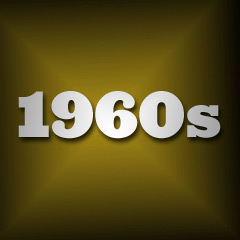
|
![]()
Greatest Films of the 1960s
1960 | 1961 | 1962 | 1963 | 1964 | 1965 | 1966 | 1967 | 1968 | 1969
Title Screen Film Genre(s), Title, Year, (Country), Length, Director, Description 





Alfie (1966, UK), 114 minutes, D: Lewis Gilbert



Andrei Rublev (1966, Soviet Union) (aka Andrei Rublyov, or The Passion According to Andrew), 205 minutes, D: Andrei Tarkovsky

Au Hasard Balthazar (1966, Fr./Swe.), 95 minutes, D: Robert Bresson
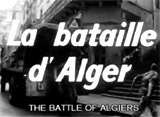


The Battle of Algiers (1966, Alg./It.) (aka La Battaglia Di Algeri), 117 minutes, D: Gillo Pontecorvo
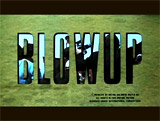



Blow-Up (1966, UK), 110 minutes, D: Michelangelo Antonioni
A thought-provoking, art-house masterpiece from Italian director Michelangelo Antonioni - a view of the world of mod fashion, and an engaging, provocative murder mystery that examines the existential nature of reality through photography. It was Antonioni's first film in English, and quickly became one of the most important films of its decade, and a milestone in liberalized attitudes toward film nudity and expressions of sexuality. [The film in some respects resembles Hitchcock's Rear Window (1954), and proved influential for other young filmmakers: i.e., Coppola's The Conversation (1974), and De Palma's Blow Out (1981).] A desensitized-to-life, nihilistic, high-fashion London free-lance photographer Thomas (David Hemmings), who lives a mid-60s life of excess (riches, fame, and women), becomes bored with his lucrative career of glamour photography. So he resorts to photographing, in documentary style, the seamy and sordid side of life in London, in flophouses and slums. Innocently in the meantime, he takes candid photos in a deserted park of a lover's tryst-rendezvous between a kerchief-wearing, enigmatic woman (Vanessa Redgrave) and a middle-aged, gray-haired man in a light-gray suit. She pursues him to ask for the illicit photos, as he imagines that he has witnessed a scene of sexual intrigue - never thinking that he may have accidentally obtained visual, criminal evidence of a murder. The climax is a suspenseful, obsessive sequence of the photographer processing and blowing up several pictures from his park visit, and magnifying them larger and larger to poster size. As tension heightens, he pins the pictures on the wall of his living room - in sequence - giving them life as if they were individual frames in a motion picture. Ultimately, they reveal a riveting possibility. In the film's finale is another indelible, symbolic image emphasizing the slim line between objective reality and illusion - a group of pantomiming students in white-face playing an invisible game of tennis with non-existent rackets and balls - and audience.


Born Free (1966, UK/US), 96 minutes, D: James Hill



Closely Watched Trains (1966, Czech) (aka Ostre Sledované Vlaky), 93 minutes, D: Jirí Menzel


Fantastic Voyage (1966), 100 minutes, D: Richard Fleischer




A Funny Thing Happened On The Way To The Forum (1966, US/UK), 99 minutes, D: Richard Lester
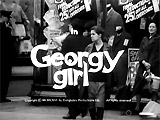



Georgy Girl (1966, UK), 100 minutes, D: Silvio Narizzano
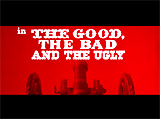

The Good, the Bad, and the Ugly (1966, It./Sp.) (aka Il Buono, il Brutto, il Cattivo), 161 minutes, D: Sergio Leone
The third and final installment (but actual a prequel) in under-rated Italian director Sergio Leone's The Man with No Name epic trilogy, this is perhaps the best-known "spaghetti western" of all-time. 'The Man with No Name' was Eastwood's star-making role, after appearances in the previous A Fistful of Dollars (1964) and For a Few Dollars More (1965). Elements of his character can be found in his later anti-hero cop "Dirty" Harry Callahan character in Dirty Harry (1971). As with Leone's other westerns, this film is viciously violent and machismo in tone, but buoyed by the classic, instantly-recognizable, twanging Ennio Morricone score. In this sweeping, stylistic, and operatic film, The Man with No Name (but dubbed Blondie) (Clint Eastwood) is the unsmiling anti-hero "Good" guy, Angel Eyes Sentenza (Lee Van Cleef) serves as the vile and ruthless "Bad" guy, and Tuco Ramirez (Eli Wallach) provides the greedy, talkative, clownish and self-centered "Ugly". With very little dialogue, lots of closeups, and vast widescreen landscapes, the film's plot, set during the Civil War, concerns the acquisition of a treasure chest of $200,000 in stolen Confederate gold buried in a grave at a faraway location. All three of the main characters, basically amoral, anti-social bounty hunters, outlaws, and murderers, are forced to form an uneasy partnership or alliance, leading to the film's climactic graveyard shootout in which the opportunistic desperados find themselves facing off one last time for the fortune. [In 2003, a special restored and extended English language version, almost three hours in length with about 15 minutes of previously-cut scenes, was released that used the original Italian release cut, with Clint Eastwood and Eli Wallach dubbing in their voices to scenes that were cut from the USA release.]




King of Hearts (1966, Fr./It.) (aka Le Roi de Coeur), 100 minutes, D: Philippe De Broca


A Man and a Woman (1966, Fr.) (aka Un Homme et une Femme), 102 minutes, D: Claude Lelouch
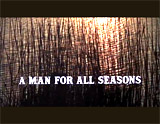


A Man for All Seasons (1966, UK), 120 minutes, D: Fred Zinnemann
A Best Picture-winning film. The verbose, stagy, yet superb screen adaptation and historical period piece by Robert Bolt and Constance Willis was from Bolt's own stage play about the honorable Sir Thomas More (Paul Scofield reprising his stage role in an Oscar-winning performance), the new Lord Chancellor of England after the death of Cardinal Wolsey (Orson Welles) in 1529. He was 16th century England's great lawyer, judge, and a devout Catholic, who found himself in a clash of ideals with King Henry VIII (Robert Shaw, also Oscar-nominated). In the morality play of the conflict between church and state, More's unflinching faithfulness to the Catholic Church forced him to refuse to acknowledge the petulant king's divorce from Catherine of Aragon (his own brother's widow, who had proven infertile) to marry his mistress, Anne Boleyn (an unbilled Vanessa Redgrave), and his subsequent creation of the Anglican Church of England. Henry was intent on having his wife bear a male heir to continue his dynastic reign, so he had set his sights on Anne Boleyn. The King annuled his current marriage and wed Anne (who was then crowned as Queen in 1533). The new Archbishop of Canterbury upheld the marriage. Determined to break from Rome, Henry renounced papal authority and declared himself the head of the Anglican Church, known as the Act of Supremacy. When the stubborn king broke with papal Rome, the steadfastly-principled, strictly-ethical, and pious More resigned his chancellorship. Thomas Cromwell (Leo McKern) in Parliament passed a law requiring all English subjects to take an oath of allegiance to accept Henry's will, but More refused to accept the heresy and publically endorse Henry (he kept a disapproving silence, and refused to accept the new Church) - and was imprisoned for a year in the Tower of London. In his treason trial, More defended himself in a Westminster court to a jury handpicked by Henry VIII, and was betrayed by the traitorous Master Richard Rich (John Hurt) with perjured testimony, while Cardinal Wolsey (Orson Welles) chided More for his foolish rectitude. More was quickly found guilty in a sham trial. When he finally was able to defend himself, he made an impassioned speech that denounced the king. More forgave his executioner before he was beheaded - and became a revered martyr.

Persona (1966, Swe.), 85 minutes, D: Ingmar Bergman
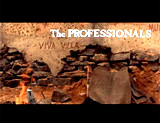


The Professionals (1966), 117 minutes, D: Richard Brooks




Seconds (1966), 100 minutes, D: John Frankenheimer


War and Peace (1966, Soviet Union) (aka Voyna i Mir, or Война́ и мир), 401/414 minutes, D: Sergei Bondarchuk
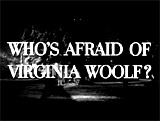


Who's Afraid of Virginia Woolf? (1966), 129 minutes, D: Mike Nichols
Nichol's debut film as director - of an adaptation of Edward Albee's scathing, dark, and vitriolic play - with a bold use of expletives. Real-life married couple Richard Burton and Elizabeth Taylor portray a dysfunctional couple's abusive, sado-masochistic, deteriorating marriage - as a weary, tortured, disillusioned academic professor George and his frumpy, alcoholic, foul-mouthed, seductive and abrasive wife Martha. The two invite a young teacher Nick (George Segal) and his mousy wife Honey (Sandy Dennis) to their home for a bitter and relentless evening of brutal, acerbic, verbal games that increase the hateful intensity of their mismatched, love-hate relationship.